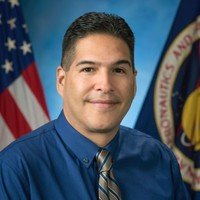Kenneth Attocknie serves as a Principal Aerospace Engineer at SAIC, where he leverages over 25 years of extensive experience in the U.S. spaceflight industry to drive innovative solutions in spacecraft design and operations. His current role emphasizes the critical importance of safety and mission assurance,...
Kenneth Attocknie serves as a Principal Aerospace Engineer at SAIC, where he leverages over 25 years of extensive experience in the U.S. spaceflight industry to drive innovative solutions in spacecraft design and operations. His current role emphasizes the critical importance of safety and mission assurance, particularly within the context of the International Space Station (ISS) Environmental Control and Life Support Systems. Kenneth's expertise in risk-informed decision-making is pivotal in ensuring the reliability and safety of complex aerospace systems, making him a key contributor to high-stakes projects that require meticulous engineering management and configuration management.
Throughout his career, Kenneth has been instrumental in various key projects that have shaped the landscape of space exploration. His sustained experience within Houston’s Mission Control Center has equipped him with a unique perspective on the operational challenges faced during space missions. This hands-on experience allows him to effectively communicate intricate technical concepts to diverse audiences, from engineers to stakeholders, ensuring that all parties are aligned on project objectives and safety protocols.
In addition to his technical acumen, Kenneth is adept in project planning and program management, utilizing tools such as Earned Value Management to track project performance and ensure successful outcomes. His skills in proposal writing and project engineering further enhance his ability to contribute to the advancement of aerospace initiatives. Recognized with formal commendations for his contributions, Kenneth continues to be a driving force in the aerospace sector, dedicated to pushing the boundaries of what is possible in human spaceflight and exploration.







